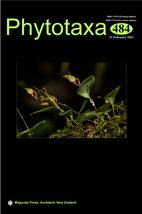Abstract
Papilionoideae is the most species-rich subfamily of Fabaceae. Within Papilionoideae, the “core genistoids” comprise many genera of the tribes Podalyrieae, Thermopsideae, Euchresteae, Crotalarieae, Genisteae, and part of Sophoreae. Seed macro- and micro-morphological characters and seed storage proteins of 12 Egyptian species belonging to three tribes of the core genistoides (Sophoreae, Crotalarieae, and Genisteae) were examined using light microscopy, scanning electron microscopy, and SDS-PAGE electrophoresis. Seed shape, size, surface topography, hilum characteristics, epidermal cell patterns, periclinal cell walls, and anticlinal cell boundaries are described here. Seed protein profiles show variable banding patterns with molecular weights ranging from approximately 5 to 270 kDa. Multivariate analyses based on seed morphology and storage proteins elucidate the phenetic relationships among the investigated species at both the tribal and intrageneric levels. The taxonomic and phylogenetic implications of multivariate analyses are compared with previous and current systematic treatments of the genera within the three tribes. Our results confirm the high taxonomic importance of seed morphology in distinguishing among the investigated species. A key to the species using seed macro- and micro-morphological characters is presented.

